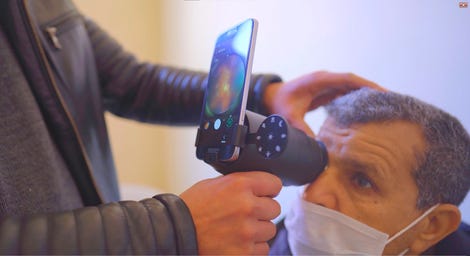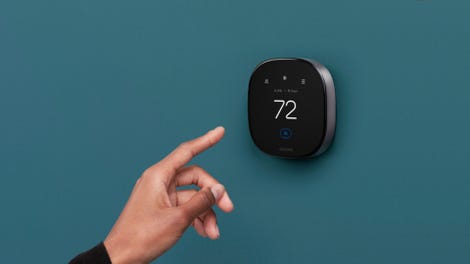When it comes to responsible digital behavior, experts recommend looking not only at product purchases and their lifecycle, but also at how you use your devices. The point on what you can do on a daily basis.
1. Take stock of your lifestyle and its impact on the environment
“The carbon footprint of the digital sector today represents 3 to 4% of greenhouse gas emissions worldwide and 2% of the carbon footprint nationally” indicates a French government site dedicated to the question. But once these figures are set, it is difficult to know exactly how to improve individual practices.
“If you ask people what they mean by sustainability, it’s hard to come up with anything more concrete,” Gartner analyst Ed Anderson, who works on the issue, told ZDNET.
The concept of sustainability can indeed vary from one person to another, in particular according to their way of life. It is for everyone to somewhat objectify the impact of their digital lifestyle. The French government offers two calculators on this page. The first proposes to test your footprint on the climate, by integrating the digital dimension. The second makes it possible to discover the impact of digital uses on the climate.
Still, according to Ed Anderson, every little habit counts when it comes to sustainability. And so it becomes essential to use technology in the right way. “We have to get to the point where it’s not just about sustainability anymore, but about specific things, specific activities that lead us to the right sustainability results,” he says.
2. Recycle your devices, but make sure you do it the right way
Recycling your old devices should be as easy as buying them. But not everyone knows how or where to dispose of their old devices, resulting in a growing amount of unrecycled electronic waste (e-waste).
With important consequences: the world produces no less than 50 million tons of electronic waste per year according to the UN.
If you aren’t already recycling your unused smartphones, cameras, computers, and other devices, you should. The good news is that there are many different ways and places you can properly recycle your old hardware.
Several companies set up take-back and recycling programs for your products, such as Samsung or Apple. So Apple users can trade in any device, regardless of condition, and Apple will give you credit for a new device and recycle it for free.
You will also find practical information on recycling in France by visiting the Ecosystem website, the public body in charge of this mission.
3. Upcycle your devices
Conversely, it is not necessarily necessary to recycle your obsolete smartphone. You can choose instead toupcycle your old devices to give them a new life. It’s another way to use the technology in a sustainable way without having to dismantle or destroy the product.
But before moving on, here is a definition:
“Upcycling is translated into French by surcyclage or even upcyclage, which could be defined as “recycling from above” indicates the site Les Horizons. Upcycling is a kind of super recycling which has become in a few years one of the major trends in the circular economy. The objective is to recover materials or products that are no longer used, with the aim of creating objects or products of superior quality”.
Mark Newton, Samsung’s sustainability manager, explains that the success of upcycling is not so much in transforming the product as in finding a new use for it to solve a real problem. But it is not won in advance. Even at Samsung, the implementation of this type of program comes up against economic imperatives. Still, these initiatives have the merit of trying the adventure: Galaxy Upcycling allows customers to use their old Samsung phones for new purposes, with the aim of reducing the need to recycle the devices.
For example, through the Samsung SmartThings app, consumers can use an old Samsung smartphone to turn it into a device that controls their connected home devices, such as lights or television.
“You can take advantage of all the sensors and capabilities that an old smartphone can have. It’s got cameras, a microphone, and connectivity, so it’s a great way to bring some added value to our customers for their home automation systems,” Newton told ZDNET.
But the program has other applications; Mr. Newton explains that Samsung uses upcycling for educational and even medical purposes.

Picture: Samsung
“For example, we created an augmented contact lens that works with an old smartphone. When connected to this lens, which was very easy and inexpensive to produce, it creates an eye screening device,” explains Mr Newton. “We are therefore able to provide very inexpensive devices to NGOs that cannot afford expensive devices made for this specific purpose.”
And if you don’t have a Samsung smartphone, there are still ways to upcycle. For example, you can install a surveillance camera app, such as Alfred, on both your old and new device, then place the old smartphone where you need it to use it as a security camera.
Finally, you can use a smartphone dedicated entirely to GPS navigation to increase the battery life of your main smartphone.
4. Become an informed consumer
According to Mr. Newton, sustainable development is also about supporting companies involved in this field and making informed purchasing decisions. “If you try, in addition to looking at the price of a product, to learn a little about the company, you will take a big step forward in terms of sustainability,” he says.
Many companies have pledged not to produce greenhouse gases. If you want to buy a particular product, find out about the company’s sustainability goals. The Climate Pledge is a great resource for finding out which tech companies have committed to zero carbon emissions in their processes and productions by 2040. There are currently 380 signatures, including those from companies like HP, Logitech, Philips and others.
5. Use connected home automation products
You probably have some sort of smart assistant installed in your home. Besides asking Alexa or Google what the weather is like today, you can use these devices to make your home more energy efficient.
“If you think about how people manage their thermostats today, they set them and forget them, right? But an automated system can be much more adaptive,” says Anderson of Gartner. “It can raise or lower the temperature depending on not only who’s in the house, but also who’s in the room.

Picture: Amazon
Heating is responsible for 67% of the energy consumption of French households. Here, concretely, connected home automation devices can help you consume less energy while saving money.
Smart thermostats such as Nest or Ecobee, for example, have voice control functions and room temperature sensors.
6. Don’t renew your device if you don’t have to
Finally, one thing that we can almost always count on in the world of technology is the release of new models of smartphones, tablets and laptops. Unfortunately, having the latest technology isn’t always the most durable.
“You really have to keep using the devices for as long as possible,” says Newton. “I may want a new device, but is it beneficial for me to buy a new one? Is a specific device made with recycled materials or will it save me money energy? Or can I just fix my current device and continue using it? These decisions are important.”
For example, if you were expecting bigger design changes from model to model, it might not be worth buying the latest smartphone. If a new model is similar in general design, software experience, and hardware, you can wait for bigger changes to arrive before buying it.
Source: “ZDNet.com”
